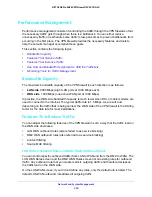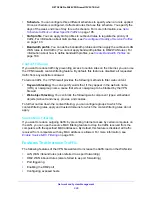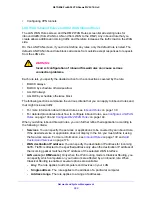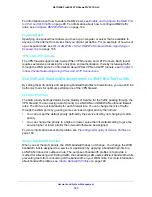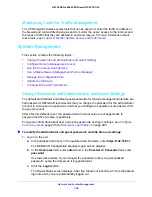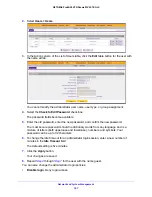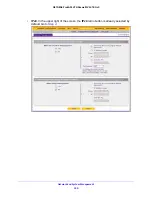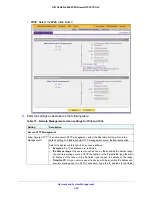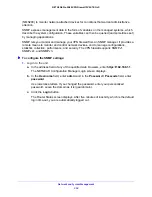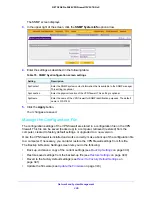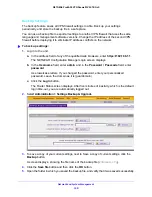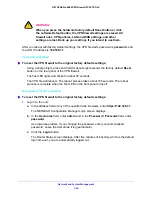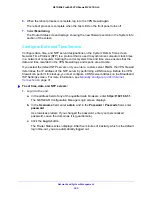
Network and System Management
334
NETGEAR ProSAFE VPN Firewall FVS318G v2
3.
To enable access from the WAN, specify a new SNMP configuration, or enable SNMP trap
events, enter the settings as described in the following table:
4.
Click the
Add
button to add the new SNMP configuration to the SNMP Configuration table.
To edit an SNMP configuration:
1.
Log in to the unit:
a.
In the address field of any of the qualified web browsers, enter
https://192.168.1.1
.
The NETGEAR Configuration Manager Login screen displays.
Table 74. SNMP screen settings
Setting
Description
Access From WAN
Enable access from
WAN
To enable SNMP access by an SNMP manager through the WAN interface, select
the
Enable access from WAN
check box. By default, this check box is cleared and
access is disabled.
Create New SNMP Configuration Entry
IP Address
Enter the IP address of the new SNMP manager.
Subnet Mask
Enter the subnet mask of the new SNMP manager.
Note the following:
•
If you want to narrow down the number of devices that can access the VPN
firewall through the host IP address and receive traps, enter an IP address with
a subnet mask of 255.255.255.252.
•
If you want to allow a subnet to access the VPN firewall through the host IP
address and receive traps, enter an IP address with a subnet mask of
255.0.0.0. The traps are received at the IP address, but almost the entire
subnet is allowed access through the community string.
SNMP Version
From the list, select the SNMP version:
•
v1
. SNMPv1.
•
v2c
. SNMPv2c.
•
v3
. SNMPv3.
Port
Enter the port number of the new SNMP manager. The default port number is 162.
Community
Enter the community string that allows the SNMP manager access to the MIB
objects of the VPN firewall for the purpose of reading only.
SNMP Trap Events
Select the check boxes to specify which SNMP trap events are sent to an SNMP manager:
•
WAN Connection Failure
. Sent when the WAN connection fails.
•
Firewall
. Sent when a new connection is initiated through addition of a custom firewall rule.
•
IPSec VPN
. Sent when an IPSec VPN tunnel is established or disconnected.
•
Configuration Change
. Sent when the configuration of the VPN firewall changes.
•
User Login
. Sent when a user logs in to the VPN firewall.
•
User Login Fail
. Sent when a user attempts to log in to the VPN firewall but fails to do so.

